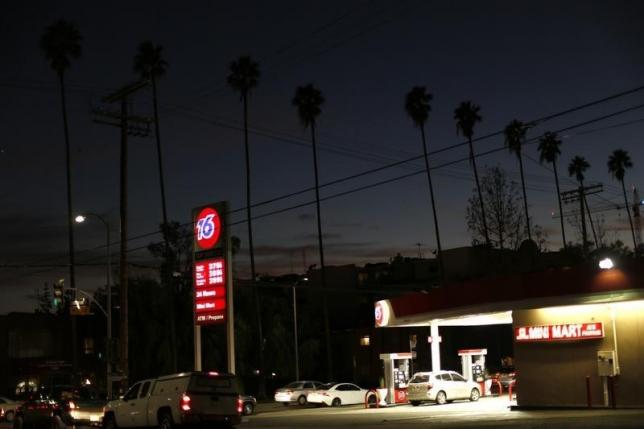
The price of regular unleaded gas is pictured at 3.79 U.S. Dollar per gallon (3.7 Liter) at a 76 gas station in Los Angeles.
Crude cargoes are progressively flowing more towards Europe where shipping costs are lower and prices are higher, a fact that have turned the region into a magnetic hunting field of attraction to those concerned in selling light sweet oil, with U.S oil inventories reaching all-time highs. It was stated that a minimum of three U.S crude cargoes are likely to cross Atlantic from the U.S Gulf Coast, in the forthcoming few weeks.
Others said offers of a variety of grades, particularly WTI, are coming for April and May arrival for buyers who are interested in them.
A number of cargoes of crude, in addition to ultra-light condensate or fuel oil, have reached Europe and the Mediterranean since the U.S. Congress late last year abolished the more than 40-year-old restriction on U.S. crude exports.
One trader stated that “A decent amount of U.S. crudes are now being shown into Europe – mostly light grades. Some majors are already offering”, on the matter he further added that “It had the potential to put some pressure on the sweet North Sea and Mediterranean.”
According to the latest figures from the Energy Information Administration U.S. crude oil stocks are now at a record 518 million barrels, after one of the largest weekly builds in the last year. The chance to sell into Europe, or arbitrage, as reflected by the premium of benchmark Brent over WTI crude futures, is around $3 a barrel, up from a discount of around 90 cents in early January.
Supply disruptions in Europe is driving in part, more satisfactory price spread, including a force majeure on Nigeria’s Forcados, a European refinery staple, that sources said could last until March as well as disruptions to Kurdish oil supplies. Also trading sources said Valero, P66 and Russia’s Litasco were among the companies lining up tankers to take U.S. crude to Europe, although it was not instantly crystal clear whether all these cargoes would contain crude or some would contain condensate.
Over the past few weeks, the aforementioned came with a drop in freight rates to make the economics of shipping to Europe potentially attractive. Another refiner regarded to the matter saying that “We’re looking at what needs to come into northwest Europe instead of the Forcados cargoes from Nigeria. That may mix up the needs of northwest European or Mediterranean refiners which may be able to take some U.S. (crude) if it works”.
In northwest Europe, differentials for physical barrels of oil have risen to around their uppermost since the beginning of the year. Meanwhile, the cost-effectiveness of running some of the more plentiful North Sea crudes, such as Forties or Ekofisk, has declined sharply, in line with a drop in European gasoline refining margins and a strengthening dated Brent price.
Traders said there might be an incentive to try other grades while Running Forties or Ekofisk is at its least cost-effective in almost two years. Most of the most recent round of offers for U.S. deliveries right now are for April or May arrival. Another refiner said that “More and more assays are coming into our in-boxes,” adding they had a choice of grades.
Many European refiners face the problem of not having run a U.S. crude through their systems in living memory and, as such, are wary of doing so, even though on paper, the numbers might make economic sense.
“We don’t know the crudes, so we need time,” another refiner said.
